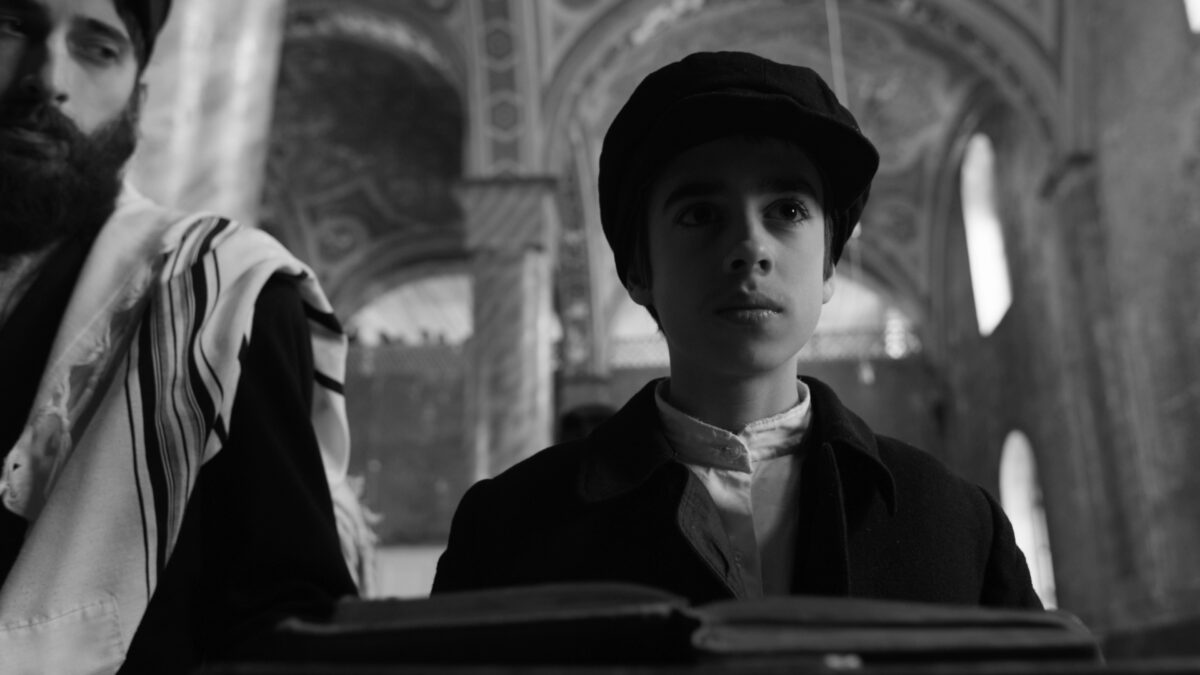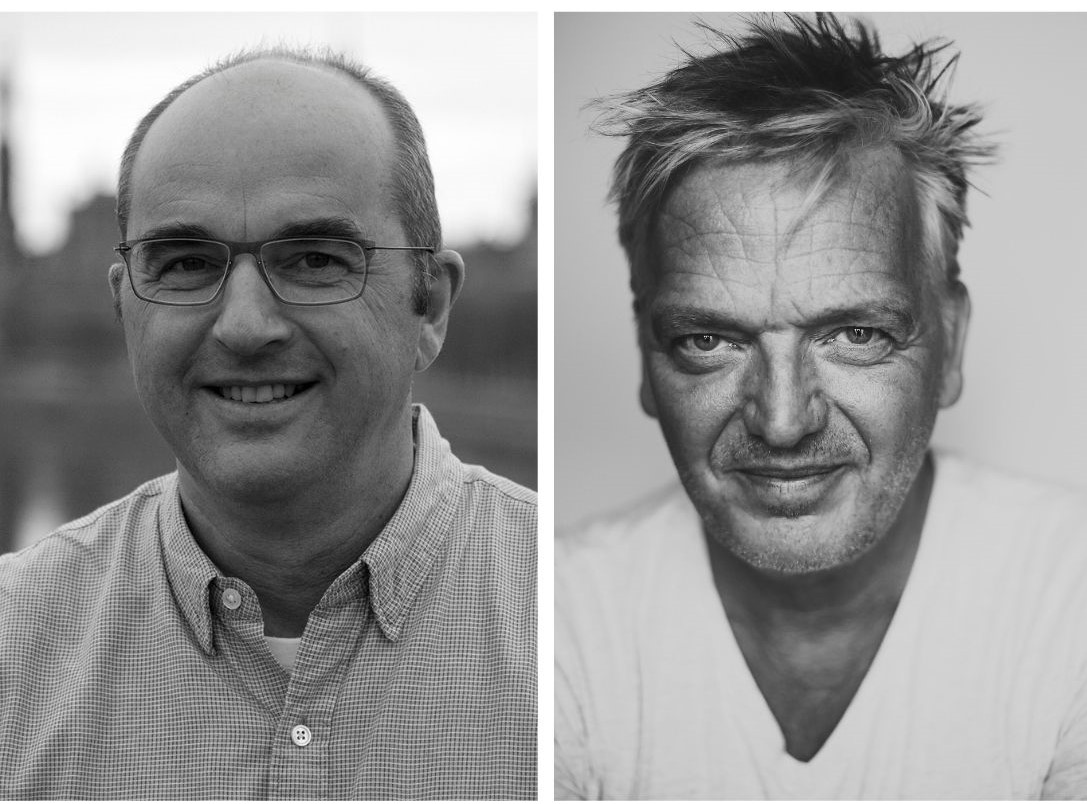“We found a small airfield that had a few old planes scattered around”. Lior Chefetz about ‘Sky Raiders’
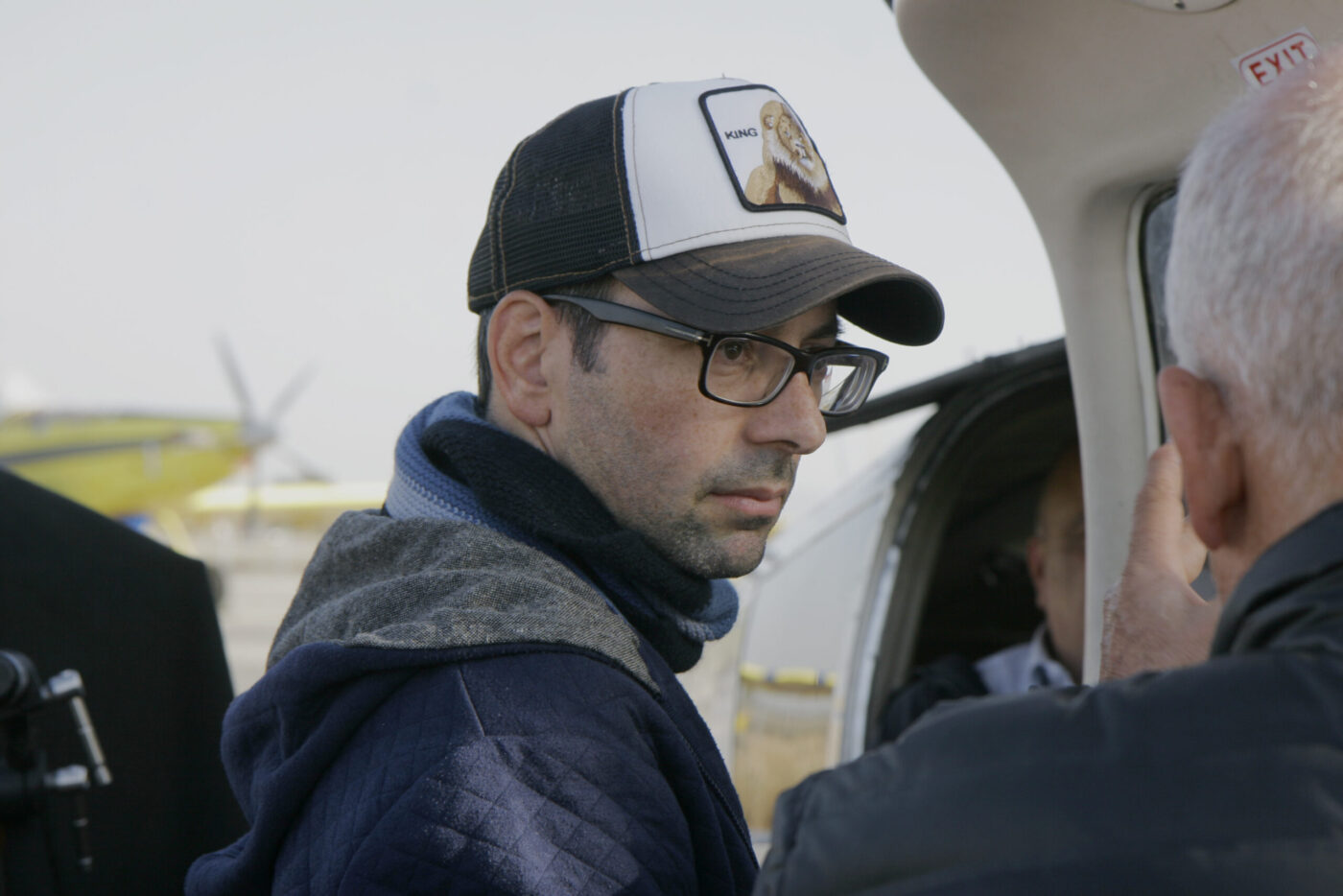
Anyone who gets a kick out of airplanes and aerobatics will certainly get their money’s worth in Lior Chefetz’ uplifting debut film. But ‘Sky Raiders’ is not just about the roaring of engines. It is also the story of a boy who has to learn to cope with his father’s death, an old man who sees the past revived, and a beautiful bond between a boy and a girl.
When Yotam and his classmate Noa find a rare antique plane, they try to bring it back to life, just in time for the Annual Air Show. Therefore they have to team up with Morris, an 80-year-old grumpy loner. For those who want to share their personal ‘Top Gun’ nostalgia with the younger generation.
Gert Hermans: Films have been made about children dreaming of getting their own dog, their own bicycle or their own horse. But dreaming about their own airplane?!
Lior Chefetz: The idea came from an old children’s book that my mother gave me for my sixth birthday. Adventure in the Squadron by Oded Marom tells about two boys restoring an old fighter plane with the help of their old paediatrician. As a child I loved that book, but I forgot all about it. Twenty-five years later, coming home from film school for a summer vacation, I found it in my old library and immediately thought it could be an exciting movie.
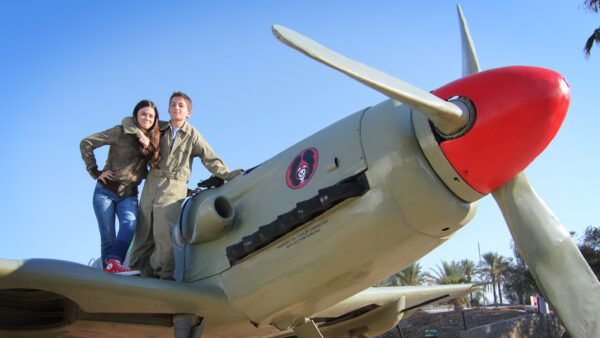
How courageous was it to make a debut with a project that involves complicated technology and is carried on the shoulders of two young actors?
I directed a lot of shorts and commercials that required SFX and VFX, so I was ready for the challenge. I had a qualified and very experienced crew, the DoP and production designer were both in their sixties. And working with child actors was the least complicated part of the production. Amir and Hila were 13 and 15 and I didn’t notice any difference from working with adult actors, except maybe a sugar rush after eating chocolate. For Hila Nathanzon this is her first role. Our lead actor Amir Tessler came with some experience – when he was 9, he played in Natalie Portman’s ‘A Tale of Love and Darkness’. When we first saw him, he was too small for the role, but when we had another audition one year later, we were surprised to see how much he grew up.
The film opens with an air battle and ends with a spectacular air show.
I love airplanes, especially Warbirds. Those World War II classic fighters are beautiful machines with a lot of history and human drama connected to them. ‘Sky Raiders’ opens with a dogfight between British Spitfires and German Messerschmitts over the English Channel, part of the famous Battle of Britain. In the end of the film, again there is a Spitfire and a Messerschmitt, this time in a contemporary setting.
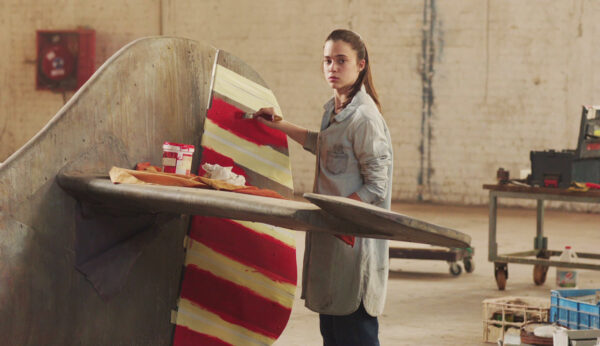
How did you capture those scenes?
The actors were filmed inside a fake cockpit, in front of a green screen. The cockpit was static, we didn’t have the resources to put it on a moving platform. So what we ended up doing was moving a light that imitated the sun. The shadows moving across the actors’ face created an illusion of the plane turning and rolling. For the exterior shots, in which you see the planes flying in the air, we had to create two elements: the backgrounds, which were filmed with a DJI Inspire 2 drone flown over various locations, like a desert nature reserve, city and landing strip. And planes which are mostly 3D models.
Some of your locations are tickling my imagination: a warehouse full of planes, an airplane cemetery...
In my mind, I was hoping to film in an endless airplane cemetery like those in Arizona. But in Israel those places are in restricted military bases. However, we found a small municipal airfield that had a few old planes scattered around. At first the airfield managers didn’t want us there: a film crew with kids and an active airfield is not a good mix. But when he heard that we are doing a movie based on that children’s book, he couldn’t believe his ears – it had always been his favourite! From that point on, we could do whatever we liked – shoot around the old planes, inside hangars, borrow an old engine, and even film a crazy chase on the runway. We also had a couple of days in the Israeli Air Force Museum to film the two historic planes: the Black Spitfire and the only relic of an Israeli Messerschmitt. Then we scouted tons of hangars, all were too small or too modern. Finally we found a very old oranges storehouse in a small village. It is rusty, has lots of echo and pigeons living in the rafters. We ended up using a lot of the pigeons’ sound in the sound design. The doors did not open to a vast field like the script called for, so we added that field in post-production.
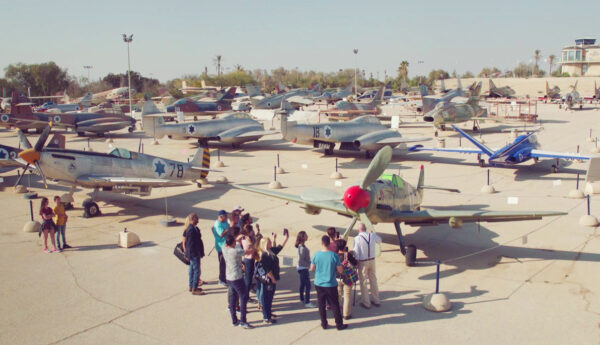
Your film often refers to the War of Independence (1948).
‘Sky Raiders’ is about following your dreams, and aviation as a symbol for freedom and self-expression. We touch very lightly on historic issues, as it’s not the essence of the film, but the restored plane has an interesting story from the early days of the Israeli Air Force. During the War of Independence, Israel faced an arms embargo, while being invaded by multiple armies, including the Egyptian army. The only country willing to secretly defy the embargo was Czechoslovakia, which had some locally made version of the German Messerschmitt fighter plane, leftovers from WW II. Two dozen aircrafts were secretly purchased and arrived less than a week after the commencement of hostilities. As Israel’s first fighter squadron, the Messerschmitts were quickly assembled and sent into combat. They attacked the Egyptian army and halted its advance. A few days later, the Messerschmitts scored the Israeli Air Force’s first aerial victories, when they shot down a pair of Egyptian bombers. So the Czech Messerschmitt, which was originally a Nazi plane, ended up becoming the first fighter plane of the newly-born state of Israel, and helped turning the tide of the war.
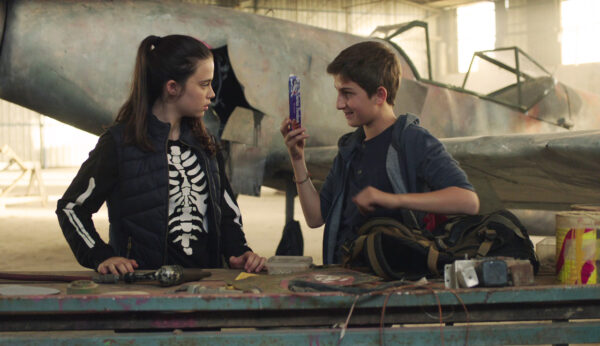
This is also the story of a mother and son dealing with a great loss.
Writing about a child who lost his father is a classic cliché. However, it’s a strong tool to create emotional connection and motivate our hero, so I decided to keep it but make the character as specific as possible. If we gave the hero an emotional truth to motivate his actions, it could work. I did some research and spoke with a woman who lost her husband in the army. She was so brave, opened her heart and told me that the most important thing for her and her sons was to be treated normally, without pity. That clicked with me strongly, and created Yotam’s motivation – he rather doesn’t talk about his father, or only in a nonchalant way, as if it’s not a big deal. The truth is that he hasn’t completely processed the loss, and buries it under layers of emotional protection.
Yotam shares a lot with his mother, but speaking about their greatest pain is what they both find very difficult.
The mother is a powerful woman, taking her future into her own hands. However, in her relationship with Yotam, there’s an elephant in the room that they avoid talking about. Mother is afraid that Yotam will be drawn to aviation, like his father, while Yotam is afraid she will move past her loss and forget his father. Despite their disagreement, they are very close and try to be supportive to each other.
In this film I recognize a great respect for what people create, craft or repair with their hands. As Morris says: “There’s something special about old machines.”
I like antiques and hand-crafted things. But the idea that an old machine has a spirit came from the Japanese term “Kami” which are the spirits or “holy powers” that are venerated in the religion of Shinto. In Japan, I noticed how natural objects, such as old rocks or antique trees, are worshipped as sacred because of the “kami” that inhabit them. I feel that old planes have some spirit in them as well, as each part was hand-crafted, and the cockpit is soaked with the sweat of the many pilots that sat inside and took this machine above any places into many daring adventures.
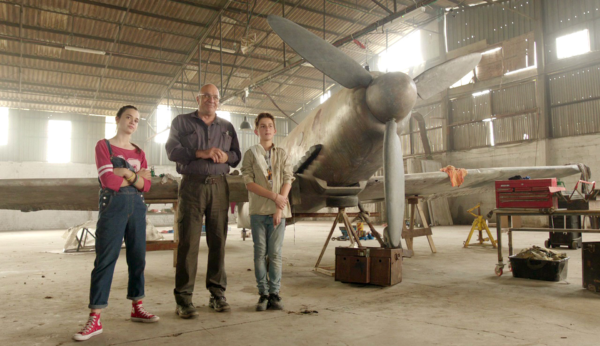
What did you do to make the bond between the children and old man Morris look credible?
For me the holy grail of relationships between children and old people is ‘The Karate Kid’ (1984) which I like so much since watching it as a kid. Arie Tcherner (playing Morris), one of the greatest stage actors in Israel, has an amazing ability to bring warmth and sensitivity to every moment. He had a true connection with the young actors and taught them a lot about acting for the camera. The kids looked up to him as a mentor, just like the characters do. Moreover, I used the comedy that comes from the generation gap, especially when Yotam asks for advice regarding girls, and all of Morris’ advices are old-school. My main direction for Arie was to have little patience with the kids, “a short fuse”. It charged the scenes with extra conflict.
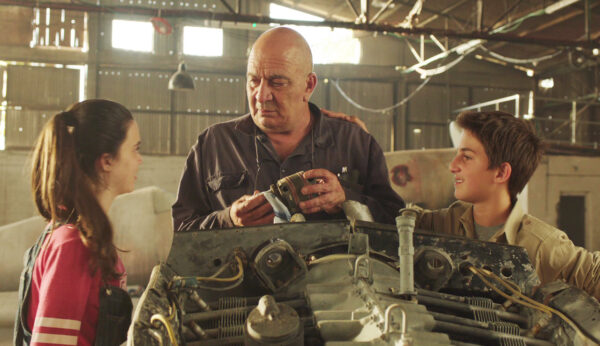
I suppose there are female pilots in the national air force?
For many years, women could not serve as pilots in the Israeli Air Force, and opening the course to women was not an easy change. The military opposed at first and only after a supreme court ruling 20 years ago, the course opened for women. Since then, a handful of women managed to complete the course. Few other combat roles are still closed to women, and currently debates are being held in the courts regarding this issue. I support the right of any person to choose what they would like to do, regardless of their gender, so it was important for me to make a point about it and show how Noa can be as good of a pilot as anyone else.
Have you made a film with a giant ecological footprint?
That is a very important point. The struggle for our environment is crucial, and I support the young generation who fight to save the planet. I’m very proud that we managed to make a movie about planes without a single airplane flying especially for our production. Every plane that takes off on the screen is digital: a computer-generated 3D image. On a broader thought, one may ask if air shows are necessary in our time, as the planes burn so much fuel. Maintaining old planes in flying condition and preserving the technical knowledge of their operation has its own cultural value. It is important to discuss how to protect the cultural heritage of aviation, while protecting our environment, and find the right balance.

